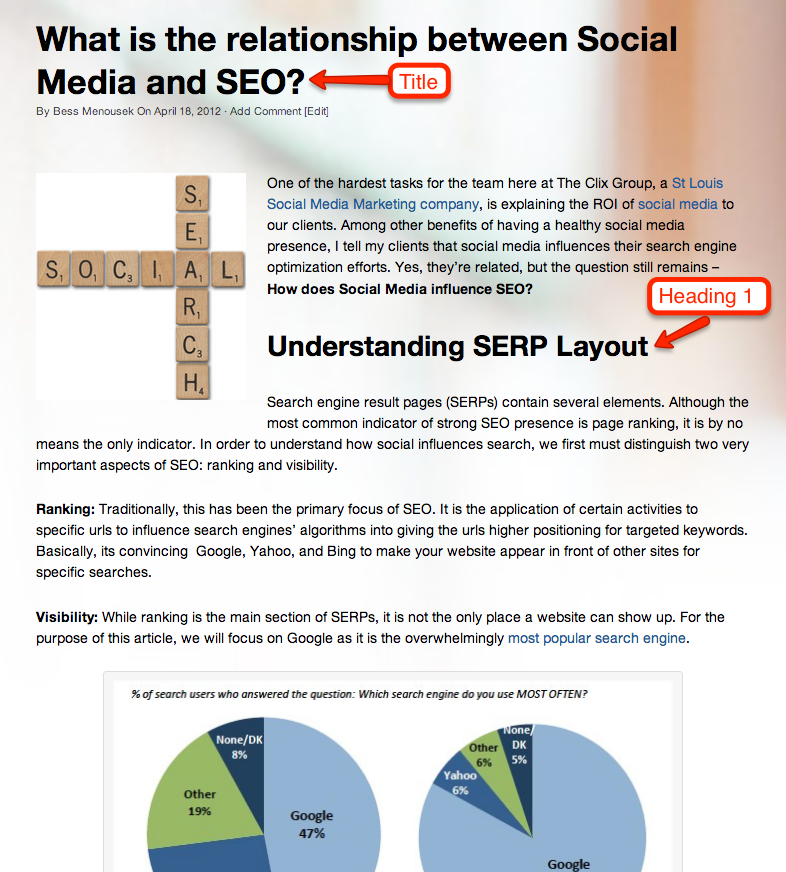Blogging Tips For Businesses
Blogging for SEO benefits can seem intimidating at first, but following a few simple guidelines can help you make the most of your posts for both the search engines and your readers. Once you have decided on a post topic that is interesting and relevant to your audience, it is important to increase the odds that visitors will stop to read and share your content.
Titles And Headings:
Titles and headings within your posts serve multiple purposes. They benefit SEO, organize the content, and make the post scannable. Titles and headings tell the readers (and Google) what the post is about.
Headings help organize the content within the post into categories or topics. This makes it easier for the author to stay on topic and easier for the reader to find relevant information.
Titles and heading make it easy for readers to determine whether or not to invest the time to read your post. It gives the reader the highlights without requiring them to delve into a series of paragraphs to find the right information. Think of heading like chapters in a book. Would you rather search through an entire book to find the information you need or skip to specific, relevant chapters?
Length:
The length of the posts will determine whether or not readers will take the time to explore your post. Anything of great length will turn away readers, as will posts with only a few sentences.
The minimum length of content should be no less than 250-300 words. Posts with fewer words will seem unimportant to Google, and decrease the value of the posts.
There is no formula for determining the optimum length, so it is important to write naturally. If you have a post of several thousand words you may want to break it down into a series of smaller posts. On the other hand, if you feel you do not have enough to say regarding a certain topic you can combine it with other relevant information at a later time.
Scannable Content:
One of the most important things for bloggers to understand is that most people will not take the time to read an entire post. In the fast-paced world of the internet, users want content that they can scan quickly. Luckily, there are ways to make posts appeal to these readers.
- Use bullet points. Rather than typing out a long list of points, call them out in a way that is visually appealing to visitors.
- Number your points. Structuring a post around a concept like “Top Three Ways To…” gives you the perfect opportunity to number your points in an easy to read manner.
- Avoid long paragraphs. Forget the five sentence paragraphs you were forced to write in school. Online, 3-4 lines of text, regardless of the number of sentences included, is all that should be in a paragraph.
- Limit lists. Readers are not interested in more than 10 points per post. More facts become too difficult to navigate and remember.
- Dress up the text. Using features like Bold, Italics, and Underlining makes it easier for readers to find keywords and topics while scanning your posts.
Media:
Visitors love media. Videos, images, and infographics can increase the appeal of your posts and help prevent visitors from skipping a post. Make sure you complete the title and alternative text for images and videos so they will be found in Google search.
Images also are the most widely shared content on the internet. A quality photo increases the chances that visitors will share the content and build natural links.
Linking:
Links help Google understand how your blog relates to other content on the web. Linking can be used internally (to other pages on your site) or externally (to pages on other sites). External linking can occur any time you mention information found on another site.




